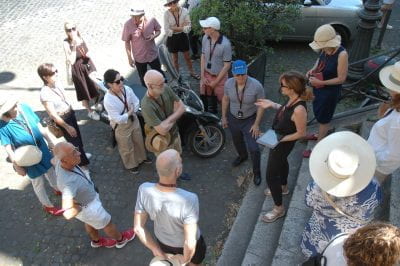Main Discipline(s):
Main Professional Societies:
Affiliation(s):
- Italian film
- Environmental Humanities
- American Association for Italian Studies (AAIS)
- Association for the Study of Literature and Environment (ASLE)
- Wayne State University, Department of Classical and Modern Languages, Literatures, and Cultures
Broadly speaking, my research works to unveil the environmental impacts and material histories of cinema—to show how the industry that creates imaginative worlds has a notable impact on the planet, too. Currently, I’m working on a book about FILM Ferrania, an iconic film stock manufacturer in Italy. Ferrania manufactured the material support for some of the most significant Italian films of the mid-twentieth century, like Federico Fellini’s Nights of Cabiria and Pier Paolo Pasolini’s Mamma Roma, and countless comedies, documentaries, home movies, and newsreels. My project unearths the lives that intersect in the production of analog film stock for the motion picture industry—the forces that make film stock vibrant, lively matter. I’m looking for traces of the animal, vegetable, and mineral lives that underpin the creation of celluloid. I’m following the long geological history of the Val Bormida, in Liguria, where the factory is located, the daily lives of workers in the film factory and their cellular lives as elements of the chemically-intense production process impacted their bodies, celluloid afterlives as film ages in the archives, and film stock’s re-mediated, largely digital life in the twenty-first century.
I’ve worked in Italian film studies since graduate school, but I’ve begun to specialize in environmental media studies because I care deeply about the environment. I think understanding the nuances and complexities of the environment – its political, social, and cultural dimensions – requires committed, interdisciplinary work. For my current work I’m learning a lot about photochemistry, and my last project had me learning everything I could about geology (volcanoes!) and animal behavior (goats!). It energizes me to do this kind of work, which combines meticulous specialization and broad interdisciplinarity. All this to say that my current research is a combination of things I know and things I want to learn!
The Italian film industry is working to make the entire film ecosystem more sustainable, from certifying sustainable film productions to making cinemas and festivals attentive to waste, energy use, the carbon cost of travel, etc. I participated in a symposium in Rome that was proposing that scholars and industry professionals should work together on the topic, and I think there is a lot of potential there. A doctoral student from the University of Rome La Sapienza is starting research on this topic and will be coming to Detroit as part of her fellowship – I’m so excited about this opportunity to work with her and to learn more.
Donna Haraway is one of my favorite thinkers. She got her PhD in Biology and now is a Professor Emerita in the dynamic History of Consciousness Department at the University of Southern California (Barad is there too, by the way). Aside from having written brilliant books and articles about everything from cyborgs to dogs to the Capitalocene, she teaches scholars to recognize their own presence in their work. She has such a distinctive, sometimes wacky voice – I really appreciate that she approaches academic work with joy and courage.



